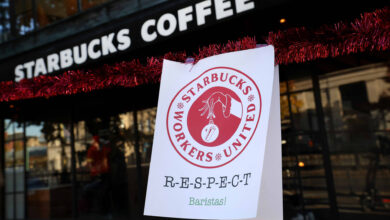Fashion-Related Small Business Ideas


Recent analysis in the State of Fashion 2023 report by McKinsey and The Business of Fashion paints an uncertain future for the fashion industry this year. Amid inflation and recession fears, the report indicates that fashion brands should prep for a potential shopping slowdown.
While this may seem pessimistic, it’s also a great opportunity for entrepreneurs to enter the fashion market. Some of the fashion industry’s biggest names, including Prabal Gurung, Victoria Beckham, Reformation, and Christian Siriano were founded during the recession in 2008. If you’re a fashion fan seeking a new business opportunity, now might be a good time to launch a small business geared toward fellow fashionistas. These business ideas can help you capitalize on the moment’s biggest consumer trends.
Create a truly green fashion brand
Consumers are well aware that the fashion industry is not particularly sustainable. According to one report, the fashion industry is responsible for 5–8% of annual climate emissions. Savvy consumers are already seeking alternatives to carbon-producing big brands.
“Concern for sustainability is strong among younger generations—and growing overall,” Claudia D’Arpizio, Global Head of Fashion & Luxury at Bain & Company, told Fashion United. “Brands that proactively design sustainability into their strategy and operations will cement their relevance and capture a windfall of unmet demand, now and into the future.”
Startup founders are well-positioned to compete for this market share. Attract new customers by creating a fashion brand that makes sustainability its core mission. Sustainable practices can be incorporated into your supply chain, distribution, product design, and even how you recycle dead stock.
[Read more: How Slow Fashion Is Creating Opportunities for Startups and Legacy Brands Alike]
Start a gender-fluid fashion label
Gender-fluid, or gender-free, fashion is becoming more popular. In 2019, one organization estimated that more than 55% of Gen Z consumers shopped “outside their assigned gendered area.” In practice, this means fashion brands need to move away from traditional his-and-hers sectioned retail spaces and toward more inclusive designs.
“Gender-fluid fashion is gaining greater traction amid changing consumer attitudes towards gender identity and expression,” said the State of Fashion 2023 Report. “For many brands and retailers, the blurring of the lines between menswear and womenswear will require rethinking their product design, marketing, and in-store and digital shopping experiences.”
Entrepreneurs interested in capturing a wide range of consumers can focus on gender-free clothing that caters to all. Nonbinary dressing offers an opportunity to be creative in your designs with an eye toward creating a great fit, no matter who tries on the product.
Concern for sustainability is strong among younger generations—and growing overall.
Claudia D’Arpizio, Global Head of Fashion & Luxury at Bain & Company
Design and print T-shirts
Looking for a quick and easy way to get into the fashion market? Consider opening a print-on-demand establishment that uses a third party to handle inventory, shipping, and fulfillment while you simply create the design. Print-on-demand suppliers provide white-labeled products such as T-shirts, hats, phone cases, hoodies, and tote bags. They offer these items to entrepreneurs who then customize those products and sell them on a per-order basis.
“With many print-on-demand services, you’re paying per product, so the base price per unit will be more expensive than if you were to order in bulk,” wrote Shopify. “But the advantage is that if a certain t-shirt design doesn’t sell, you haven’t actually paid for the item yet (only the design, if you outsourced it).”
If you have a tagline, a logo, or a graphic design you’re ready to share with the world, print-on-demand products are a great way to see if consumers are interested. Then, you can adjust and scale your operations once you start to gain traction.
Reinvent formalwear
For many, the pandemic ushered the end of formally getting dressed for work. Indeed, working from home in loungewear has shifted consumer attitudes toward dressing up.
“While offices and events will likely become more casual, special occasions may be dominated by statement-making outfits that consumers rent or buy to stand out when they do decide to dress up,” wrote the State of Fashion 2023 Report.
This shift offers an opportunity for fashion entrepreneurs to capitalize on formal dressing opportunities. You may explore opening a formalwear thrift shop in your community, launching a fancy dress rental website, or finding a way to repurpose officewear for other occasions.
[Read more: Lady Black Tie Founder: “Approach Competition as Motivation”]
Establish an online boutique
Finally, there are plenty of tools available that make it easy to start your own online boutique. Curate items on your own online store using a product-sourcing app. For instance, MyOnlineFashionStore offers a tool that lets you import various styles into a Shopify store. From there, you can have friends model different styles, sell on social media, and use dropshipping to get your curated fashion items into the hands of customers.
CO— aims to bring you inspiration from leading respected experts.
However, before making any business decision, you should consult a
professional who can advise you based on your individual situation.
CO—is committed to helping you start, run and grow your small business. Learn more about the benefits of small business membership in the U.S. Chamber of Commerce, here.
Published





